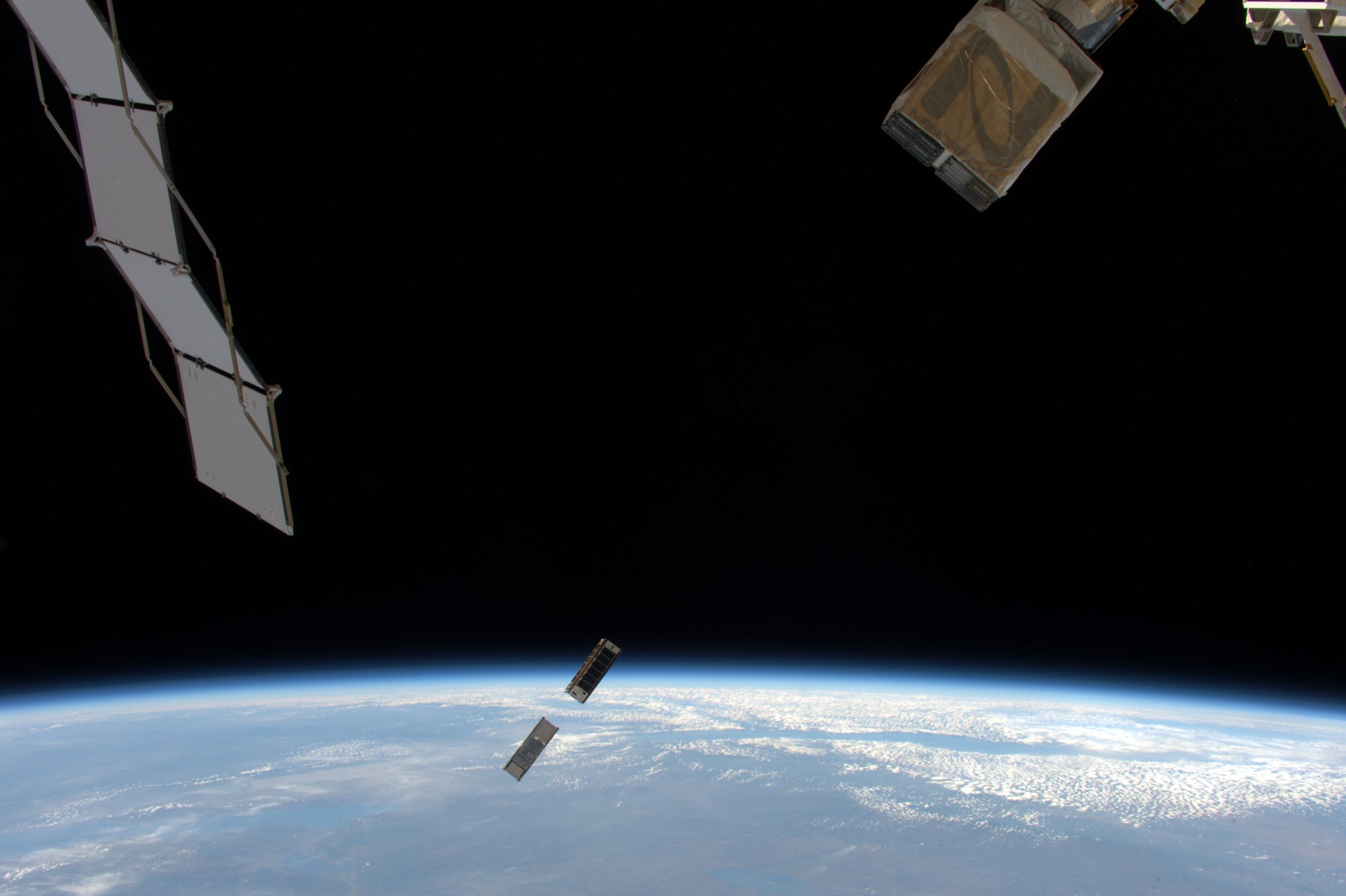On May 16, 2016, the bread loaf-sized Miniature X-Ray Solar Spectrometer, or MinXSS, CubeSat deployed from an airlock on the International Space Station to begin its journey into space. The NASA-funded MinXSS studies emissions from the Sun that can affect our communications systems.
Credits: NASA
MinXSS will operate for up to 12 months. The CubeSat observes soft X-rays from the sun, which can disrupt Earth’s upper atmosphere and hamper radio and GPS signals traveling through the region. The intensity of the soft x-ray emissions emitted from the sun is continuously changing over a large range – with peak emission levels occurring during large eruptions on the sun called solar flares.

MinXSS data will also help us understand the physics behind solar flares. The soft X-rays carry information about the temperature, density and chemical composition of material in the sun’s atmosphere, allowing scientists to trace how events like flares and other processes heat the surrounding material in the sun’s atmosphere – which are still being debated among solar scientists.
CubeSats are a new, low-cost tool for space science missions. Instead of the traditional space science missions that carry a significant number of custom-built, state-of-the-art instruments, CubeSats are designed to take narrowly targeted scientific observations, with only a few instruments, often built from off-the-shelf components. For example, MinXSS uses a commercially purchased X-ray spectrometer for a detector and an extendable tape measure as a radio antenna. The MinXSS development program was funded by the NASA Science Mission Directorate CubeSat Initiative Program and implemented by the University of Colorado Boulder under the leadership of Principal Investigator Tom Woods.
MinXSS was launched via the NASA CubeSat Launch Initiative program on Dec. 6, 2015, aboard Orbital ATK’s Cygnus spacecraft through NASA’s Commercial Resupply Services contract. Since its inception in 2010, the CSLI has selected more than 120 CubeSats for launch and deployed 43 small satellites as part of the agency’s Launch Services Program’s Educational Launch of Nanosatellite Missions.
Karen C. Fox
NASA’s Goddard Space Flight Center, Greenbelt, Md.
Related Link



























